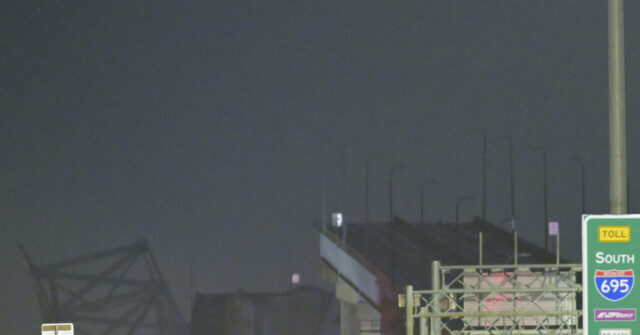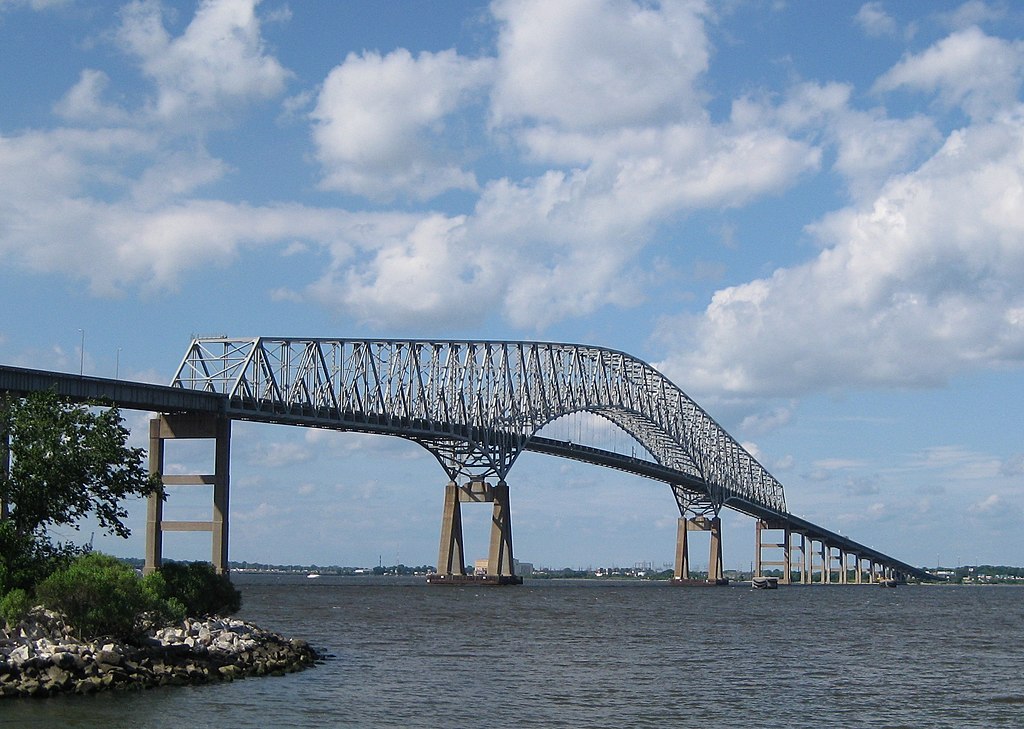
The major Beltway Bridge over the Patapsco River has collapsed after being hit by a large cargo ship, sending vehicles travelling on the bridge tumbling into the water.
A four-lane bridge carrying the Interstate-695 over the mouth of Baltimore harbour collapsed in the early hours of Tuesday morning, around 0130 EST (0530GMT). Baltimore Mayor Brandon M. Scott has said he is aware of an “incident at the Key Bridge” and that emergency services are on scene.
The Francis Scott Key Bridge in Baltimore, Maryland which crosses the Patapsco River has reportedly Collapsed within the last few minutes after being Struck by a Large Container Ship; a Mass Casualty Incident has been Declared with over a Dozen Cars and many Individuals said to… pic.twitter.com/SsPMU8Mjph
— OSINTdefender (@sentdefender) March 26, 2024
The Baltimore Fire Department says the collision, which saw several vehicles which were travelling on the bridge plunge into the Patapsco River, is a ” developing mass casualty event”. Department director of communications Kevin Cartwright told the Associated Press: “This is a dire emergency… Our focus right now is trying to rescue and recover these people.”
Livestream footage of the river shows a large container ship, identified as the Singapore-flagged container ship MV Dali, striking head-on one of the piers supporting the central span of the bridge. This immediately brings down that central span and the southward span towards Fort Armistead. Just a moment later, the northward span, left unbalanced by the loss of the centre, also collapses.
Realtime marine traffic data from the port of Baltimore shows the MV Dali is still broadcasting by its automatic identification system transceiver that it is “underway using engine”, which may indicate if a machinery failure caused the ship to drift out of the channel and into the bridge piles, it was not detected by onboard systems which are supposed to be automatic. Several rescue craft including Baltimore Fire Department boats are around the bridge.
A livestream video provided by local businesses and hosted on YouTube seen by Breitbart London shows the lead-up to the collision and the moment of impact. Amber flashing beacons on the central span of the bridge show what is reported to be construction crews working on the structure late into the night, while light traffic including cars and tractor-trailer trucks cross on the open lanes.

The Francis Scott Key Bridge in 2009 / Jeff Covey / Creative Commons Attribution-Share Alike 2.0 Generic license
In a strike of blind luck, the moment the ship hits the bridge and it collapses, passing traffic appears to be very light compared to the number of cars and trucks present on the bridge just minutes earlier.
The MV Dali approaches from the north-east but approximately four minutes and 20 seconds before impact all lights aboard the ship go out, a clear indication of a total onboard loss of power. One minute and ten seconds after this visual indication that all is not well onboard some lights are restored, and they continue to turn on and off to varying degrees until the collision.
During these last minutes, the MV Dali turns sharply — particularly for a ship of its size — to starboard, putting it on course for the bridge support. From three minutes until impact until the strike a very large plume of thick, dark smoke appears to pour from the ship’s chimney, indicative of either the engine working very hard or a fire onboard. In the case of the crew being aware of the iminent disaster and attempting to prevent the collision, the volume of smoke would likely mean failed engines being restarted or — if already running after the total electrical failure — the engines being put under a high load to slow the ship down.
This story is developing and more follows
